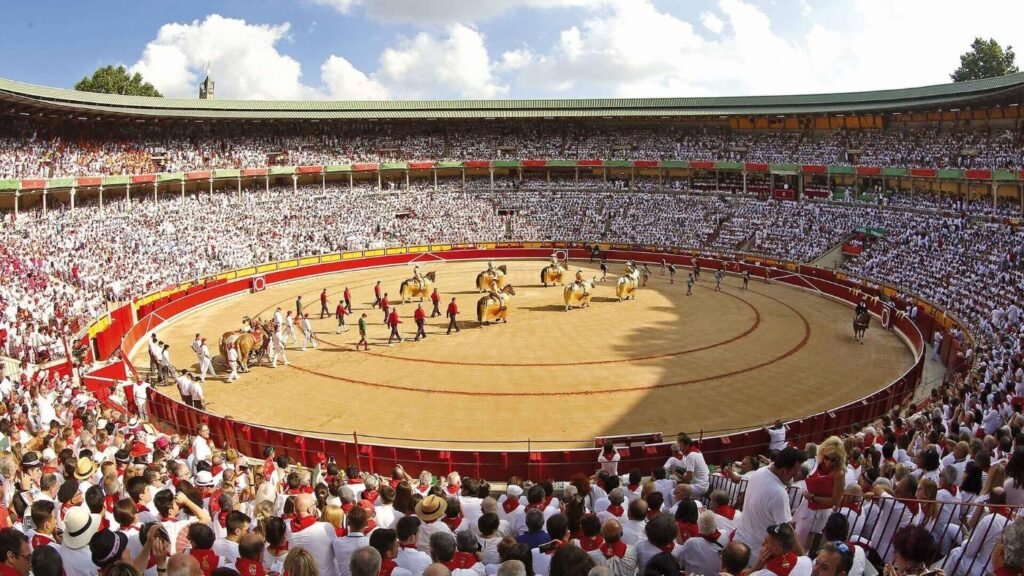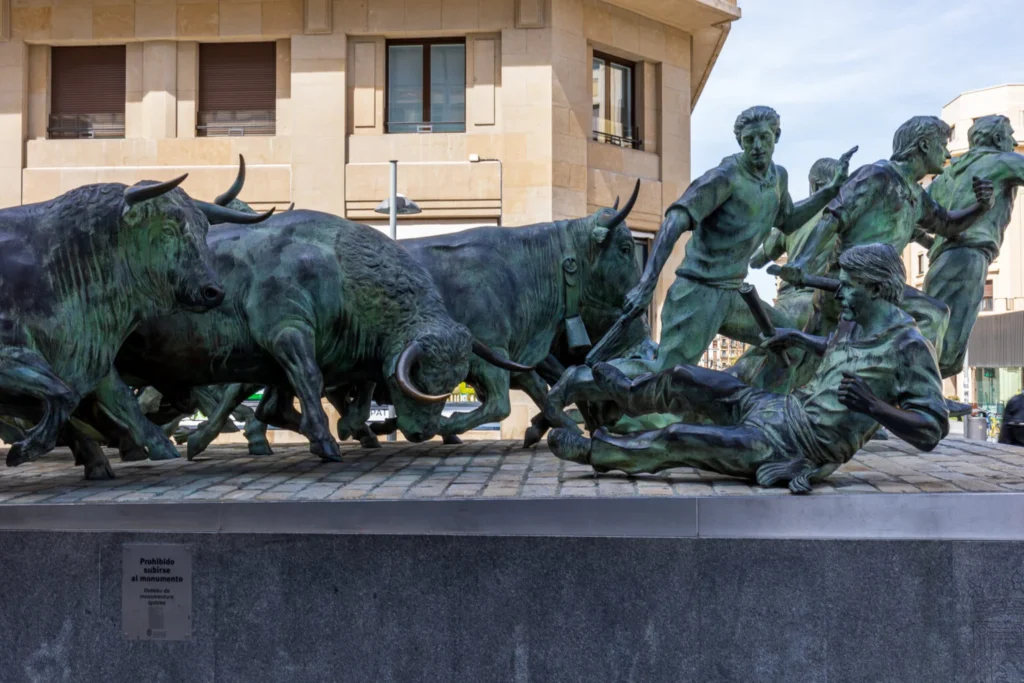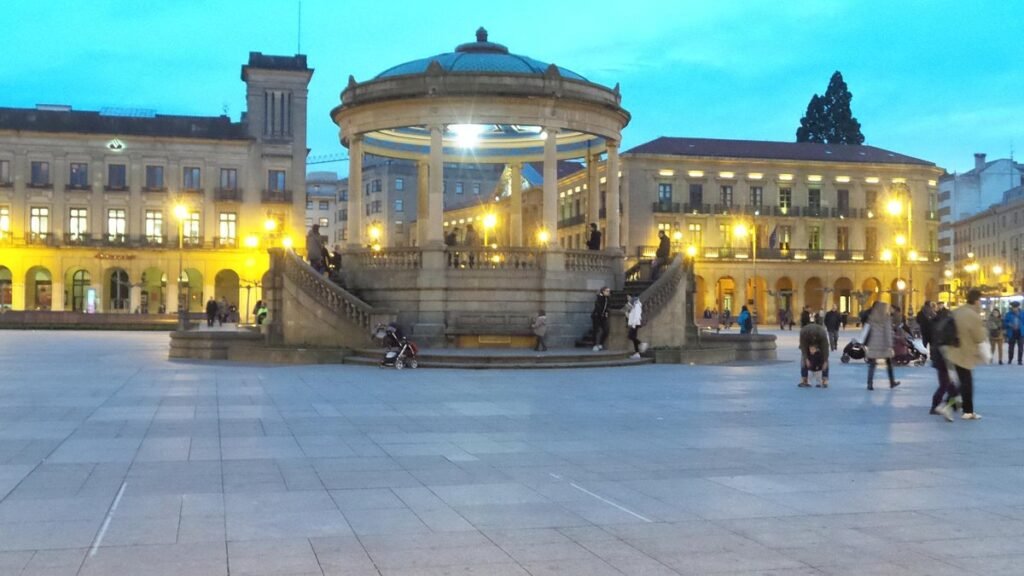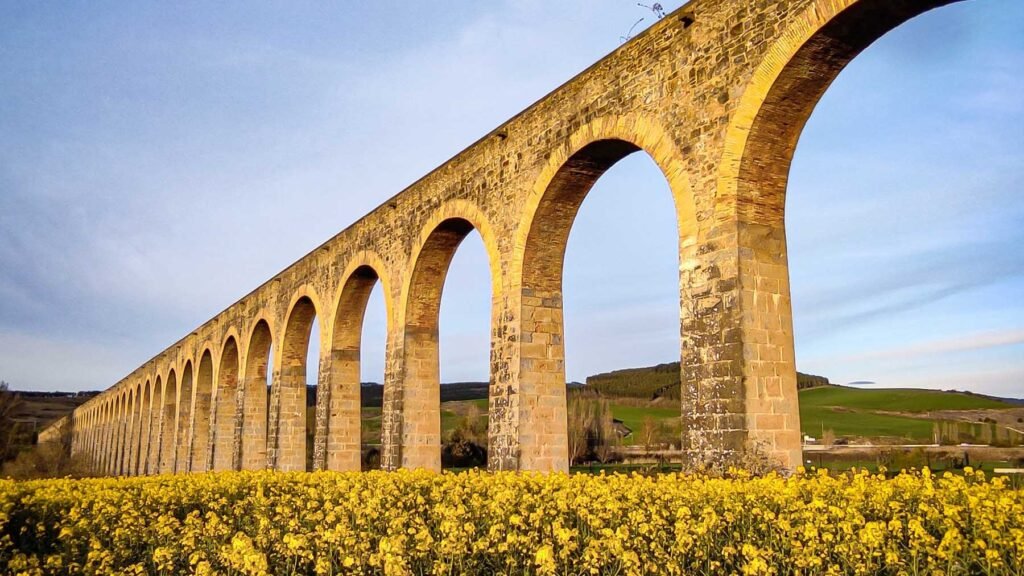Hello adventure lovers. Pamplona is rich in monuments. Visiting the city is pure pleasure for history lovers. Spanish cities delight with large squares, this is also the case in Pamplona. And as befits a national attraction, you must visit the bullfighting arena.
Pamplona is the capital of the province of Navarre in northern Spain, as well as the historic former Kingdom of Navarre. Pamplona is also the second largest city in the greater Basque region.
Fiesta San Fermin

One of the most important events in Pamplona is the Fiesta San Fermin, a festival in honor of Saint. Firmin. The holiday is very popular among Spaniards. It involves chasing bulls through the city streets and, in the evenings, fighting bulls with bullfighters. Fieste begins with a rocket firing from the town hall. The event takes place every year on July 6-14, when residents have days off from work.
Sighseeing

Plaza de Toros
A must-see when visiting Pamplona is the Plaza de Toros de Pamplona, the bullfighting arena. Nowadays it is used for bullfights, sporting and cultural events and music concerts. The facility dates back to 1922 and can accommodate 19,720 spectators. The famous running of the bulls during the San Fermin festival ends here.

El Encierro Monument
Near the bullring ( Plaza de Toros) there is a large monument depicting the running of the bulls. Capturing a frame from the race is breathtaking. The sculpture is 11 meters long and 4 meters wide.


Cathedral of Our Lady in Pamplona

The Cathedral of Santa Maria is one of the main monuments of Pamplona. It is the most historically and artistically preserved place. This Roman Catholic cathedral was built in the 14th and 15th centuries.

Ciudadela de Pamplona
It is also worth seeing the Citadels of Pamplona (the Renaissance castle is a military fort, built between the 16th and 17th centuries), it is so huge that we can see it in its entirety from a bird’s eye view. The beautiful, green, spacious area encourages not only walks and admiring the views, but also physical activities and sports.

Museo de Navarra
The Museum of Navarre holds and exhibits a varied collection
of archaeological items and visual arts, from Prehistoric times to the 21st century.
The halls, which hold some of the most important international works, offer the public the choice of tours and visits, where they can find out more about Navarre.

Museo Catedralicio Diocesano
The Diocesan Museum is adjacent to the Cathedral building in Pamplona. The museum was built in 1960 and was rebuilt in the following years. In this museum you can see exhibits that are closely related to the sacred art of Navarre. The monuments come from the 13th, 14th, 15th and 16th centuries.

Palacio del Gobierno de Navarra
The next most important structure located in the center of Pomplona is the Palace of Navarre. The building is the seat of the authorities. The building complex dates back to 1840 and, together with the garden, delights visitors.

Iglesia de San Saturnino
The Church of San Saturnino dates back to the 13th century, is located in the oldest part of the city, and is distinguished by two soaring towers that once had military functions. The interior of the church is richly decorated with gold.

Plaza del Castillo
Be sure to visit Plaza del Castillo. It is the main square of the city and the center of local life. You will find charming cafes here, it is worth taking a walk and observing the beautiful buildings.

Noáin Aqueduct
Another interesting monument is the Noáin Aqueduct, which was built at the end of the 18th century. And 233 years ago, the Noáin Aqueduct first supplied drinking water to Pamplona’s public fountains.
